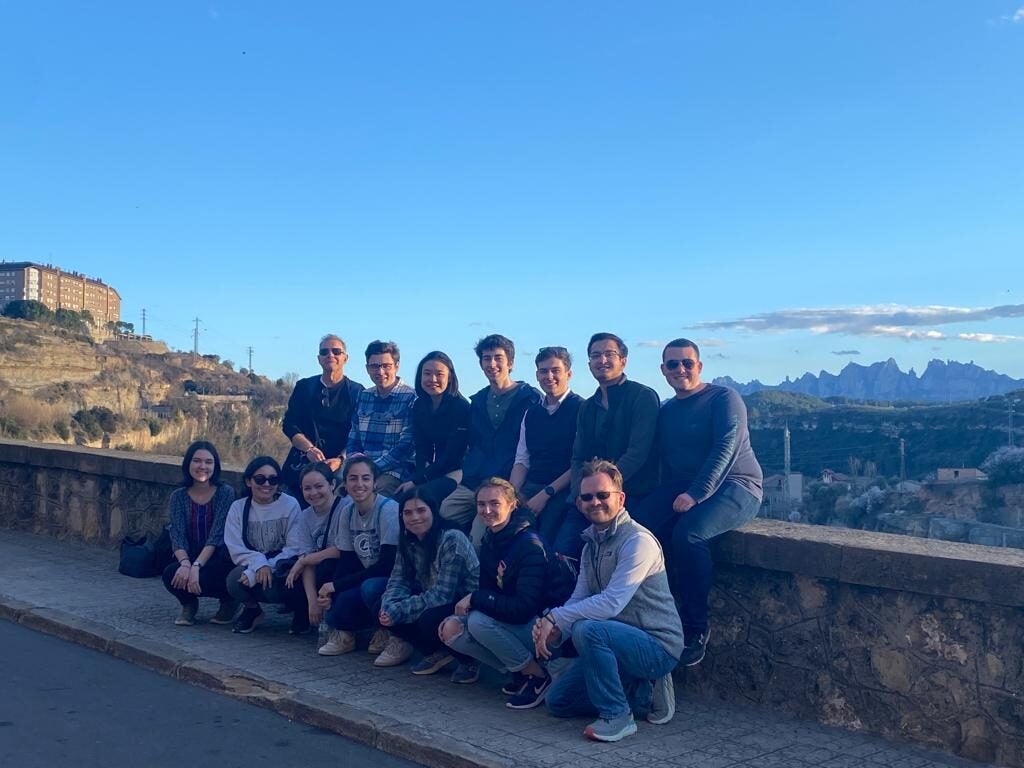Reflection: Following the Steps of St. Ignatius in Spain
By Samuel Lovell (C’25)
The cannonball moment—a story many of us here at Georgetown likely know intimately. It is also a story with a newfound significance for my classmates and me following our spring break immersion trip to Spain, where we traced the footsteps of St. Ignatius of Loyola, founder of the Society of Jesus.
The year was 1521, and St. Ignatius—or Iñigo, as he was then known—was sent to defend the city of Pamplona. Seeking prestige and fortune, Ignatius found neither; instead, wounded by an enemy cannonball, Ignatius was left fighting for his life.
Ignatius’s recovery would last one year. As the story goes, only two books were available to him, and neither were the heroic fictions he so loved: The Life of Christ and The Lives of the Saints. In these pages, Ignatius experienced a marked transformation from the vane to the spiritual. His calling, he soon discerned, was a religious vocation.
Yet, as important as the cannonball was to Ignatius, much else defined his life.
For example, consider the family castle of the Loyolas, which contained the room of conversion where Ignatius recovered and underwent his spiritual formation. Or contemplate the rooms of an ancient hospital nearby, where our group of pilgrims encountered the space where Ignatius accompanied the poor and sick as they lay dying. Even still, consider the “Black Madonna” of Montserrat, where Ignatius laid down his sword and professed his devotion to his new calling in the service of Christ.
Some of these spaces stood out as distinct among the rest; others appeared to lack much distinction at all. Yet all were formative to the character of St. Ignatius that we know today.
To an ordinary observer, these moments might have appeared insignificant altogether. Yet having studied Ignatius and the Jesuits in class this semester, equipped with the requisite readings and discussion to match, these spaces inherited a deeper quality. They became thin, a place where the divide between the earthly and spiritual narrowed, and where, for many of us pilgrims, God emerged transcendent.
Before our pilgrimage, I was made familiar with the Ignatian directive of “Finding God in All Things.” In Spain, I encountered this reality poignantly. As one fellow pilgrim elegantly posed: How could one not find God in all things?
My fellow pilgrim was right. Among the sky-shearing mountains, the outstretched plains, the expansive cities, and the cloistered villages, the sources of Ignatius’s spiritual inspiration seemed clear. Just as he was over 500 years ago, I, too, was moved by the beauty and awe of the landscape surrounding me.
This experience surprised me. As someone from outside the Catholic tradition, I doubted to what extent I could truly be a pilgrim of Ignatius, if one at all. However, as I traversed through the life of Ignatius, both throughout my course and in Spain, I realized to identify as Catholic was not necessary to identify with the story and values of Ignatius himself.
Instead, I found the Ignatian narrative to be one that was unexpectedly ecumenical. Ignatius had a God-inspired vision, a hope, to better humanity through the proliferation of education among the rich and poor alike. This is a vision I fervently share; after all, I, myself, am the product of that same education. I—like all who join in the project of Jesuit education—bear this grand and great legacy.
For this, I have gratitude, and this gratitude will last long after our pilgrimage, from the Hilltop and beyond. Even in the seemingly mundane, I seek now the continuous creation of God, a view that is transcendent in all things.
I will hold ever-present the directive Ignatius gave us, too: Ad maiorem Dei gloriam.For the greater glory of God.

